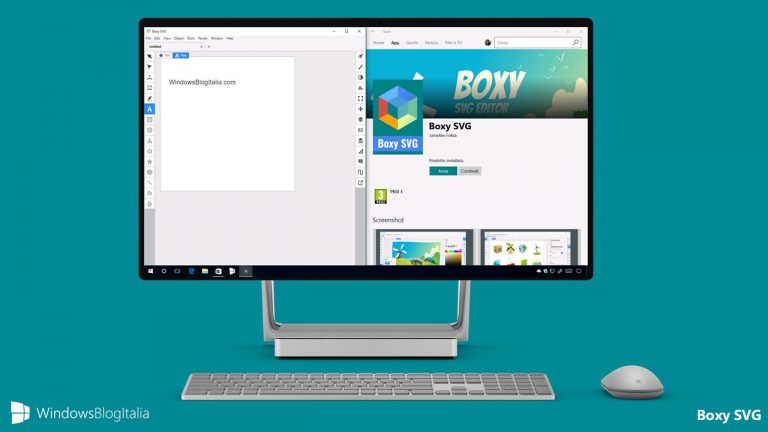

You can move your traced image next to original image and this traced image will be in vector format.
#BOXY SVG VS INKSCAPE UPDATE#
This option has Threshold limit and by changing its value you can have different result in tracing of bitmap.Ĭlick on Update button of this dialog box for seeing preview of tracing result.Īnd in preview section of this box you can see result but we just want to trace outline of this character so we will adjust threshold limit for tracing just outline.įor image threshold value will be this. Here we have many ways to trace a bitmap (if you want to know each and every way of tracing bitmap of this dialog box then you can search for ‘Inkscape trace bitmap’ article of mine) but we will go with first one which is Brightness cutoff. Or you can make right click then choose Trace Bitmap option from pop up list. Click on Trace Bitmap option of drop down list of this menu or you can go with short cut key which is Shift + Alt + B keys of keyboard. So for tracing it, go to Path menu of menu bar then click on it. Two pictures easily fit with captions on a page using this.Now select this image and we will trace it. The scaling is constant whether the drawing is at the top or following other drawings. A slightly large diagram needed these values but the difference from 50 to 30 on the veiwBox height was hardly noticeable. Note that the x dimension is unchanged also, in my experience, the scaling is far from linear. The x y controls move the origin positive values for y move the origin down and the drawing upwards.Īdjusted for 1/2 page it might look like this: Inch-based dimensions were harder to work with, and width and height had to be removed, but with mm dimensions the height could be reduced more before it complained. The height controls the whitespace if your drawing is 1/2 page you can usually reduce by 1/2 and it will only take 1/2 a page. fouled-up will print better than fouled-up.įor a half page drawing from the original: Another issue is the coordinates of the text can cause the characters to overwrite in different tspans. Usually there are coordinates within the text and tspan tags - you want to keep those. Simply moving the text inside the tspan tags works. The xml2rfc -pdf will complain about this. It might put the text between the tspan and text tags: fouled-upĪnd you need to correct it by either moving the text or deleting the tags.

Which is fine but with hyphenated text there are two issues. Sometimes the physical text is between like this It seems text is expanded to text and tspan tags. The basic svg has some identifiers that must be removed: You will need to remove clipPath and metadata (it will probably look something like this):
#BOXY SVG VS INKSCAPE FULL#
For a 1/2 page drawing a full page may be used and the height can be adjusted, but sometimes the conversion will complain and the height/width have to be removed. It is easier to make Inkscape drawing size close to the dimensions you want before saving. PowerPoint can save natively into SVG as well but that SVG is very detailed. You can resize and position on Inkscape's default page or you can create a drawing size and adjust. If you have black and white diagrams in PowerPoint these can be copied and pasted into Inkscape. Inkscape example with drawn arrows LibreOffice Draw An example SVG flowchart diagram produced in this way is linked to below. The simplest way to do that is to make an arrowhead with two lines grouped together, draw your lines, then copy your arrowhead at the end(s) of them.Īnother nice feature of Inkscape is that its 'Resize page to content' lets you resize your svg drawing to trim the white space around its edges before you save it as 'Plain SVG'. That means, if you want arrowheads at the end of lines, you have to draw them in yourself.

Note, however, that SVG 1.2 RFC only allows objects that are part of black-and-white line drawings.Īgain, Inkscape uses markers for line-end symbols (even if you create your own markers using Object → Objects to Marker). Fortunately there's a lot of tutorial material on the web, for example: Inkscape tutorial It's a big package, though, with many features, so there's a big learning curve to go through. Of the Open Source packages, in my opinion Inkscape is the best of them.


 0 kommentar(er)
0 kommentar(er)
